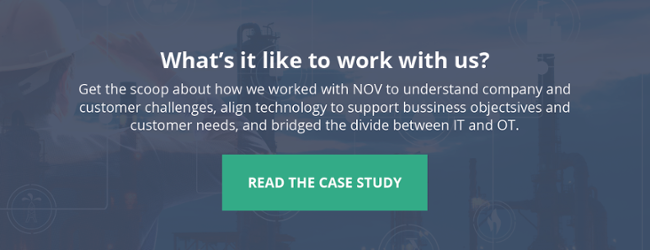In the ongoing evolution of digital in enterprise, we uncover many opinions about the best way to deploy technology to field workers. Often, these opinions were formed over many years and date back to when technology was less pervasive. The good news is that we, as a society, have moved past the question of IF we should employ technology for business advantage; businesses accept – embrace, even – the roles technology can play in business.
What remains unclear to many organizations is how to deploy technology, what expectations we should have of users and their technology adoption, and how we can support the overall solution throughout its life cycle. Because firstline workers are vital to your customers’ experiences and the company’s success, we must make sure the digital tools in their hands are effective and provide a trouble-free experience.
Dozens of factors lead to the successful adoption of modern technology, but the learning and change management processes remain a high priority. There’s no silver bullet – or a single right answer – for ensuring success. There are several misconceptions we need to snuff out, however.
Myth #1: Modern digital solutions are so easy they don’t require training
I understand why people say this – mobile and web apps are more intuitive and users more experienced than ten years ago, which eases the burden of adoption. But we’re not talking about a personal fitness, retail, or social media app where users can figure things out over time. Skyllful clients send users into the field expecting them to perform their normal duties from day one, but using only a quarter of the application’s features or ignoring a crucial part of the workflow isn’t an option because it may cause gaps in essential business metrics. To ensure the success of the solution and provide a friction-free user experience that encourages high levels of adoption, we must remember that the digital touchpoints are a component of a business solution, not the entire solution. Therefore, skills development needs to consider the entire process around the digital tools.
Myth #2: The focus should be on the application
Most modern applications are intuitive, and often the interaction with the app will become self-evident fairly quickly. Where we need to provide guidance is on the business process we’re following – and often the policies we’re enforcing – with that solution, providing context for the user, who can then benefit from the well-designed technology experience. Let’s face it: while humans are adaptable over time, we’re resistant to change in the short term, particularly when we feel that new things are being forced on us for reasons we don’t understand. The initial reaction is often anxiety due to the unknowns that lie ahead. To counter this, we need to answer the WIIFM question (“what’s in it for me?”) by explaining the benefits to firstline workers as individuals and to the company overall, providing not just know-how but also “know-why.”
Myth #3: Training is a one-time event
You can’t get a user up to speed in one try and send them out into the world. New business processes and new solutions aren’t typically absorbed in a single instance. While the project team at HQ has been in the planning stage with this solution for months or even years, users are being introduced to this metamorphosis in an extremely condensed period. Aspects of the change that are now familiar to the project team may not be obvious to the field users. We can’t expect users to absorb a month’s worth of learning in a single session; we’re living in a YouTube generation where all ages of people expect to acquire knowledge in highly relevant but short bursts. When we have a question, we need to know where to get the answer, and then we move on until we have another question. Our job is to provide the learning resources for them so they have the knowledge they need today and the ability to find support when they need it tomorrow.
When we think about digital evolution, we need to rethink how we deploy technology to our firstline workers. To succeed, we must recognize that change management and ongoing user support are as important – if not more important – than the technical aspects of the solution. The most meaningful technology deployments will treat the technology as a means to the end goal of delivering business results through people. We’d love to hear how you tackle these challenges in your operations. And if you need help on your next project, let us know – we’re ready to help.
# # #
About Skyllful
Skyllful is a leading provider of a mobile digital adoption platform that helps companies with large, mobile workforces deploy mission-critical enterprise mobile applications smoothly and successfully. With deep expertise of mobile technology and best practice field deployments as well as a leadership team with decades of experience working with large enterprise mobile workforces and applications, Skyllful offers a platform for empowering field workers to use enterprise mobile apps more efficiently and effectively, maximizing the positive effect of mobile application deployments.
Skyllful’s approach to technology-driven training and engagement combines on-device, on-demand, contextual-based simulations, reinforcement activities, deep analytics and reporting on field readiness for an enterprise-wide view of mobile employees’ impact on the organization. Whether a company is deploying a new mission-critical workforce app or seeking to improve its workforce engagement with existing apps, the Skyllful platform is easy to use, intuitively designed and proven to increase productivity and deliver greater returns on investments in technology.


